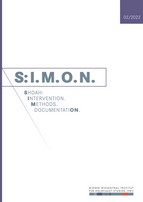Roma Deportations to Transnistria during World War Two. Between Centralised Decision-Making and Local Initiatives
Roma Deportations to Transnistria during World War Two. Between Centralised Decision-Making and Local Initiatives
Author(s): Petre MateiSubject(s): Government/Political systems, Studies in violence and power, Nationalism Studies, WW II and following years (1940 - 1949), Inter-Ethnic Relations, Ethnic Minorities Studies, Peace and Conflict Studies
Published by: Wiener Wiesenthal Institut für Holocaust-Studien
Keywords: World War Two; Roma deportations; Transnistria; Gypsy; ethnic minorities;
Summary/Abstract: This article deals with the complicated issue of the Roma deportations to Transnistria by the Romanian authorities during World War Two. There are two major questions that this article aims to answer. First, it seeks to explain how a sovereign state like Romania, which was not occupied by Germany, deported approximately 25,000 Roma. Second, it focuses on understanding and explaining the great differences in the treatment suffered by various categories of Roma or by Roma from different regions, cities, and localities. After briefly presenting the main flaws of previous explanations given so far (such as the excessive interest in elites and Antonescu, or the focus on anti-Gypsy nationalism), the analysis focuses on the local contexts. The main conclusion of the article is that these deportations were neither the result of German pressure nor of contemporary trends such as the influence of eugenics on the Romanian government, but rather the consequence of the Roma’s long-term exclusion by local actors. The criminalisation of Roma by the Romanian police was aggravated by recent developments such as the disappearance of traditional Roma crafts and services, increased pauperism, and the accelerated sedentarisation of formerly nomadic Roma. These developments frustrated the local authorities, which then had a considerable influence on Antonescu’s decision to deport the Roma to Transnistria. Once Antonescu gave the deportation order, this was interpreted and implemented by local authorities according to their own views and interests.
Journal: S:I.M.O.N. Shoah: Intervention. Methods. Documentation.
- Issue Year: 9/2022
- Issue No: 2
- Page Range: 26-50
- Page Count: 25
- Language: English

